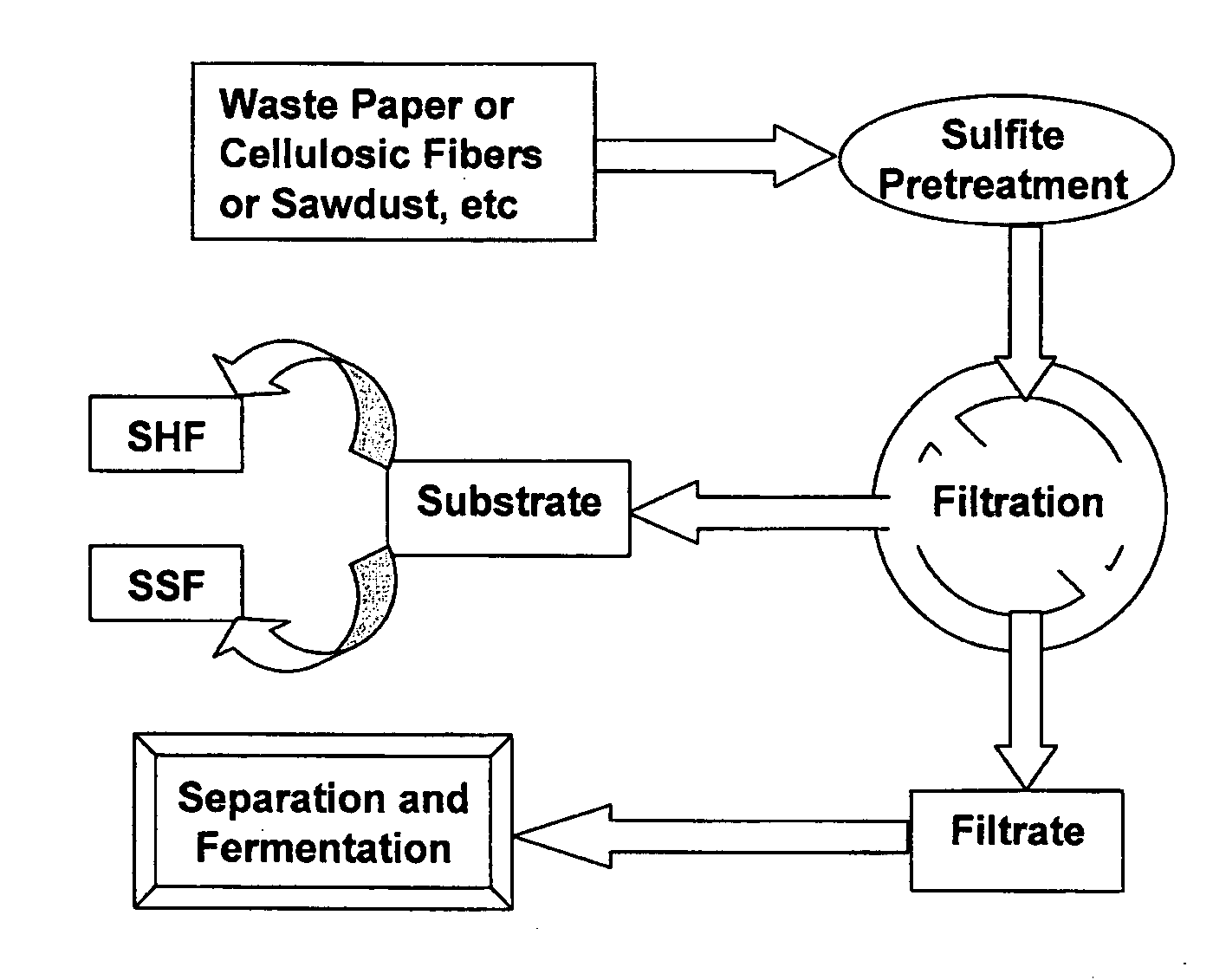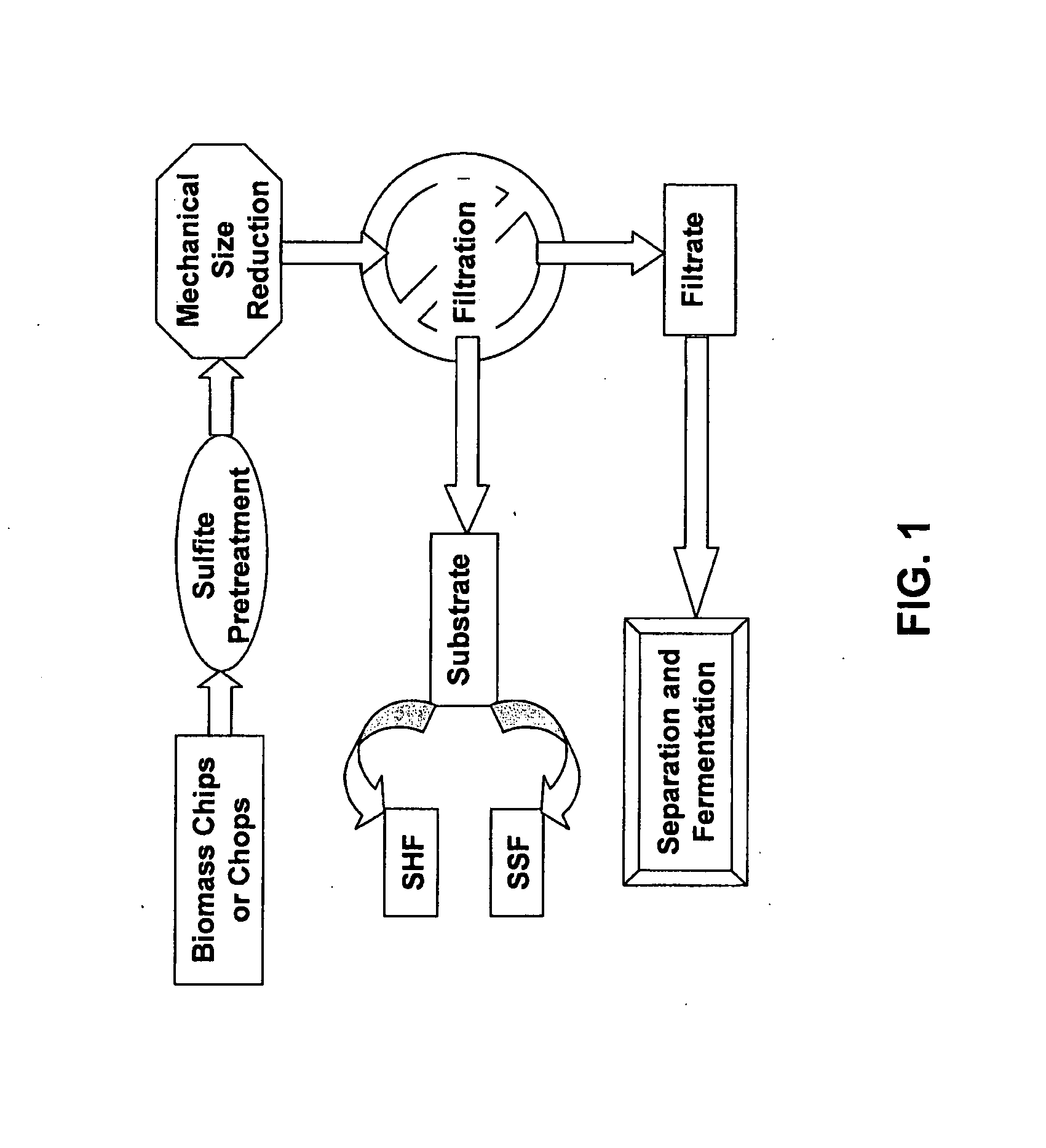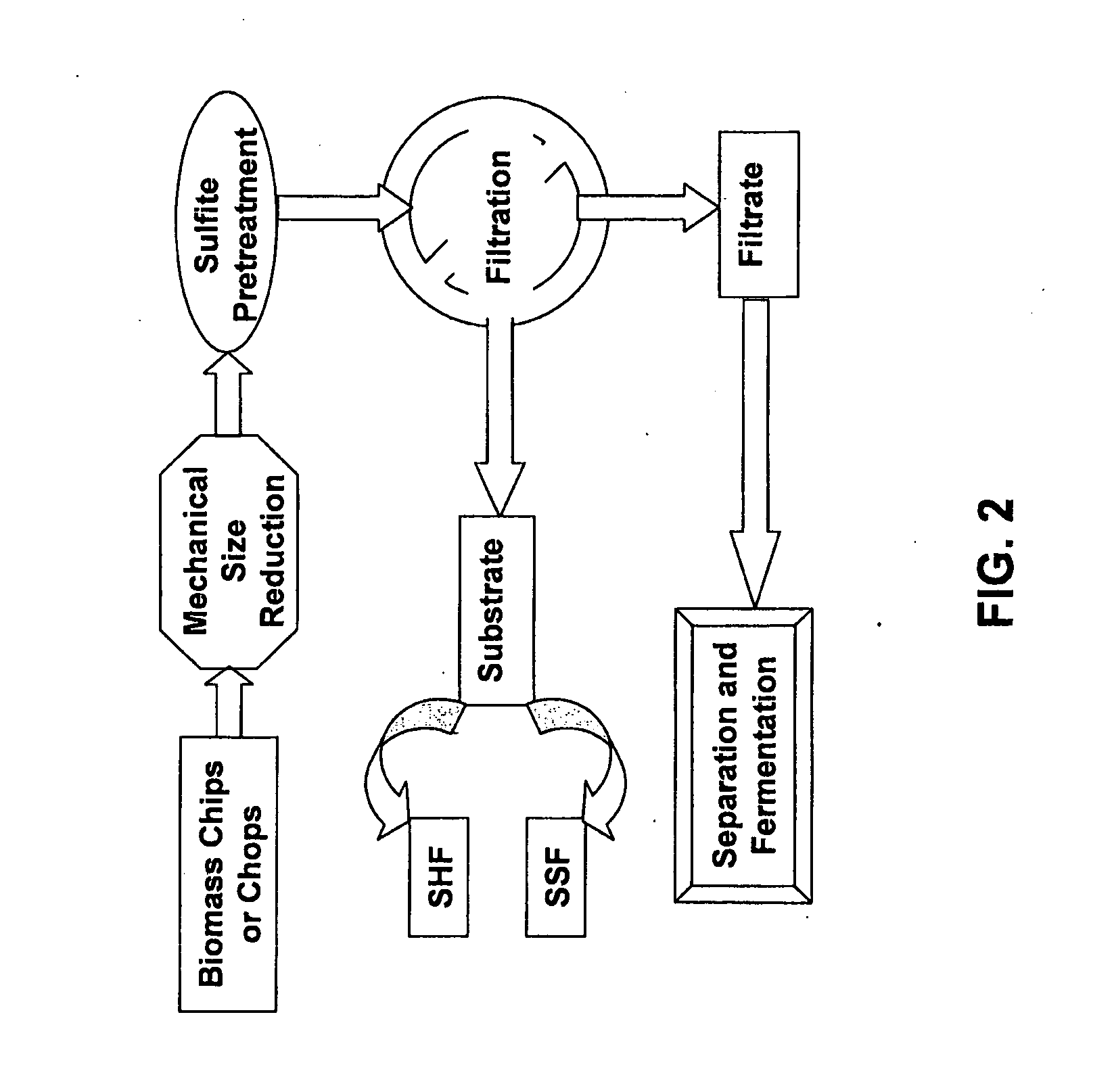Sulfite Pretreatment For Biorefining Biomass
a biorefining biomass and sulfite technology, applied in the direction of lignin derivatives, glucose production, fuels, etc., can solve the problems of difficult fermentation of pentoses, high percentage of pentoses, and sugars necessary for chemical and biological conversion, so as to save thermal energy consumption and increase conversion efficiency
- Summary
- Abstract
- Description
- Claims
- Application Information
AI Technical Summary
Benefits of technology
Problems solved by technology
Method used
Image
Examples
example 1
Materials and Methods for SPORL Process
[0239]A. Materials
[0240]The following materials were used to demonstrate the effectiveness of SPORL. Fresh Spruce, Aspen, Maple, and Red Pine chips were from the Wisconsin Rapids mill of Stora Enso North America (now New Page Corporation, OH). The purities of the wood chips were not provided. However, the chemical composition of the two wood chip samples are very close to those of pure spruce and red pine, respectively, obtained in the inventors' laboratory previously (Zhu et al., 2007). The chips were frozen at a temperature of about −16° C. until used. Fresh clone Eucalyptus wood chips were supplied by the University of Florida (Gainesville, Fla.). Fresh cornstover was obtained from the Arlington research farm of the University of Wisconsin, Madison. All the biomass was kept frozen at temperature about −16° C. before use. The waste paper was commercial newsprint paper. The wood chips were screened to remove all particles greater than 38 mm an...
example 2
Effect of Sulfuric Acid Charge (pH) on Cellulose Conversion of Spruce through Enzymatic Hydrolysis
[0263]The chemical compositions of spruce wood and substrates from six SPORL experiments at 180° C. for 30 min are listed in Table 1. The first four samples were obtained with sodium bisulfite charge of 9% on od wood at different sulfuric acid charges (pH values). The last two samples were prepared using sodium sulfite at charge of 10.9% on od wood at higher pH values, simulating neutral and alkaline sulfite pretreatments for producing mechanical and semi-chemical pulps. The results indicate that hemicellulose, namely xylan and mannan, can be completely removed with sulfuric acid charge on wood 3.68% or greater (initial pH approximately 2.2). The near complete separation of hemicellulose from cellulose is favorable not only to enzymatic hydrolysis of cellulose but also to fermentation to ethanol due to lack of efficient technologies to co-ferment xylose and glucose. For the run with aci...
example 3
Effect of Bisulfite Charge on Cellulose Conversion of Spruce
[0273]The effect of bisulfite charge on enzymatic digestibility of the SPORL substrates is shown in FIG. 11. Table 3 lists the effect of sodium bisulfite charge on wood chemical component removal. At the pretreatment temperature 180° C. and sulfuric acid charge of 1.84%, there was an optimal bisulfite charge around 9% at which xylan removal is the highest (above 90%). At this bisulfite charge, ECCS was over 90% (Table 4) and EHGY wt % untreated wood was about 35 g (FIG. 11) after 48 hours enzymatic hydrolysis. Table 4 and FIG. 11 show that bisulfite charge of 9% is also optimal for enzymatic cellulose conversion. Further analysis indicates that xylan removal seems to correlate to cellulose conversion. However, when the bisulfite charge is reduced to zero (sulfuric acid only), the treatment becomes the traditional dilute acid process, but high xylan removal does not translate to high cellulose conversion; this condition actu...
PUM
| Property | Measurement | Unit |
|---|---|---|
| temperature | aaaaa | aaaaa |
| temperature | aaaaa | aaaaa |
| temperature | aaaaa | aaaaa |
Abstract
Description
Claims
Application Information
 Login to View More
Login to View More - R&D
- Intellectual Property
- Life Sciences
- Materials
- Tech Scout
- Unparalleled Data Quality
- Higher Quality Content
- 60% Fewer Hallucinations
Browse by: Latest US Patents, China's latest patents, Technical Efficacy Thesaurus, Application Domain, Technology Topic, Popular Technical Reports.
© 2025 PatSnap. All rights reserved.Legal|Privacy policy|Modern Slavery Act Transparency Statement|Sitemap|About US| Contact US: help@patsnap.com



